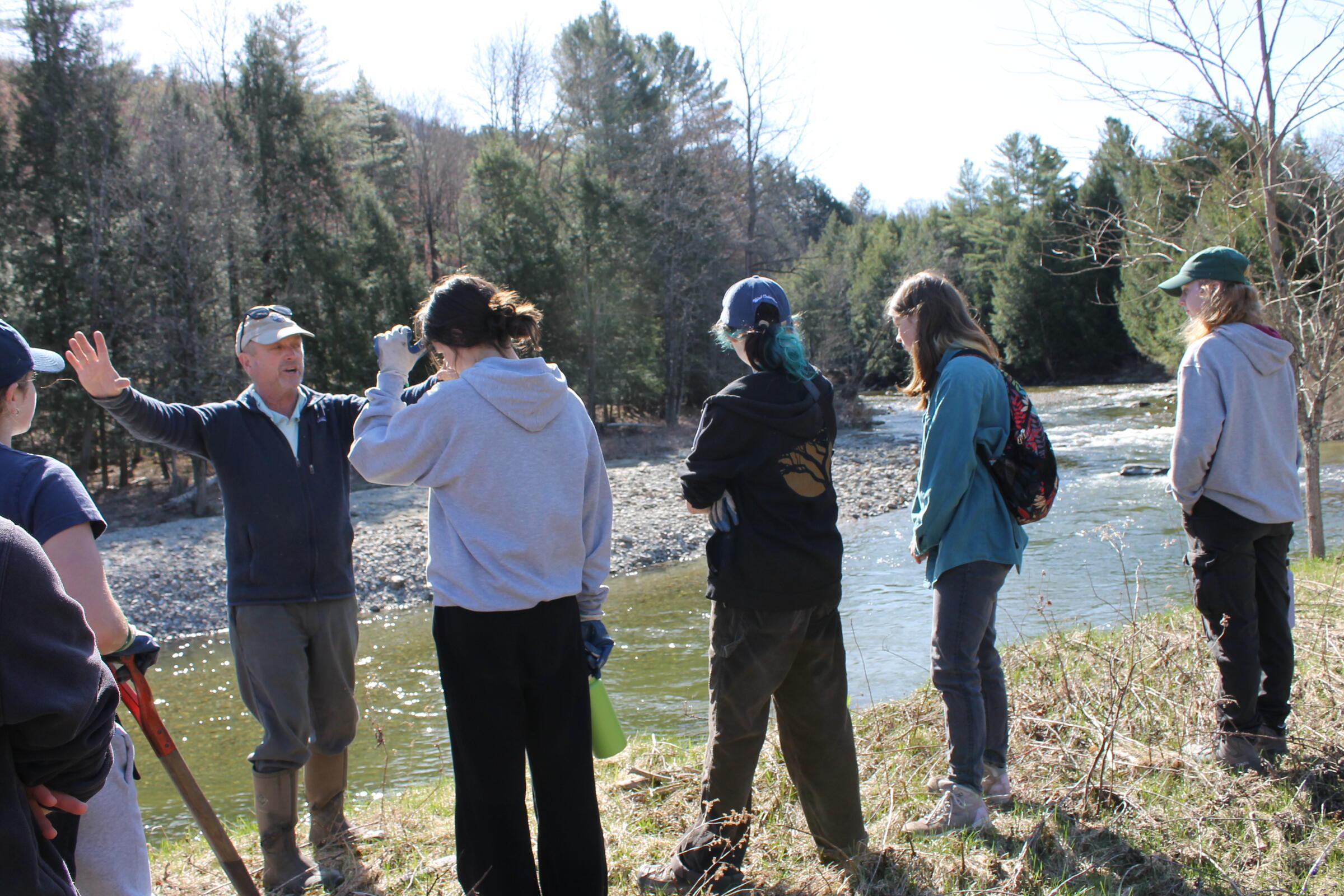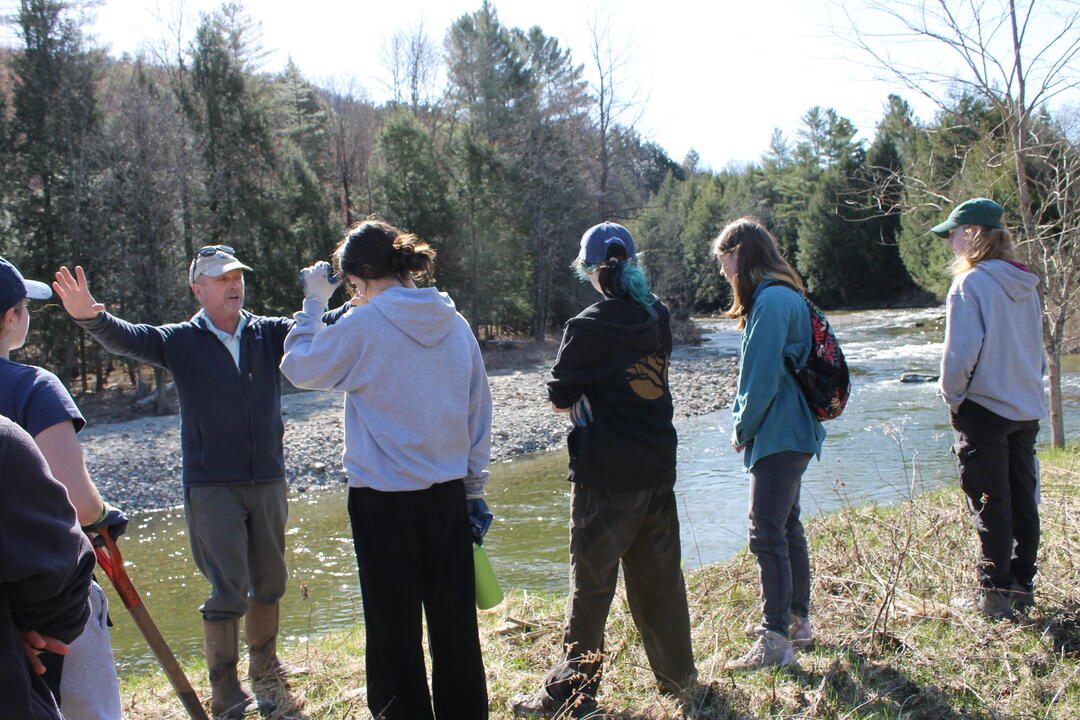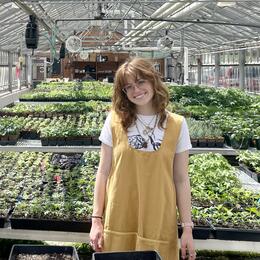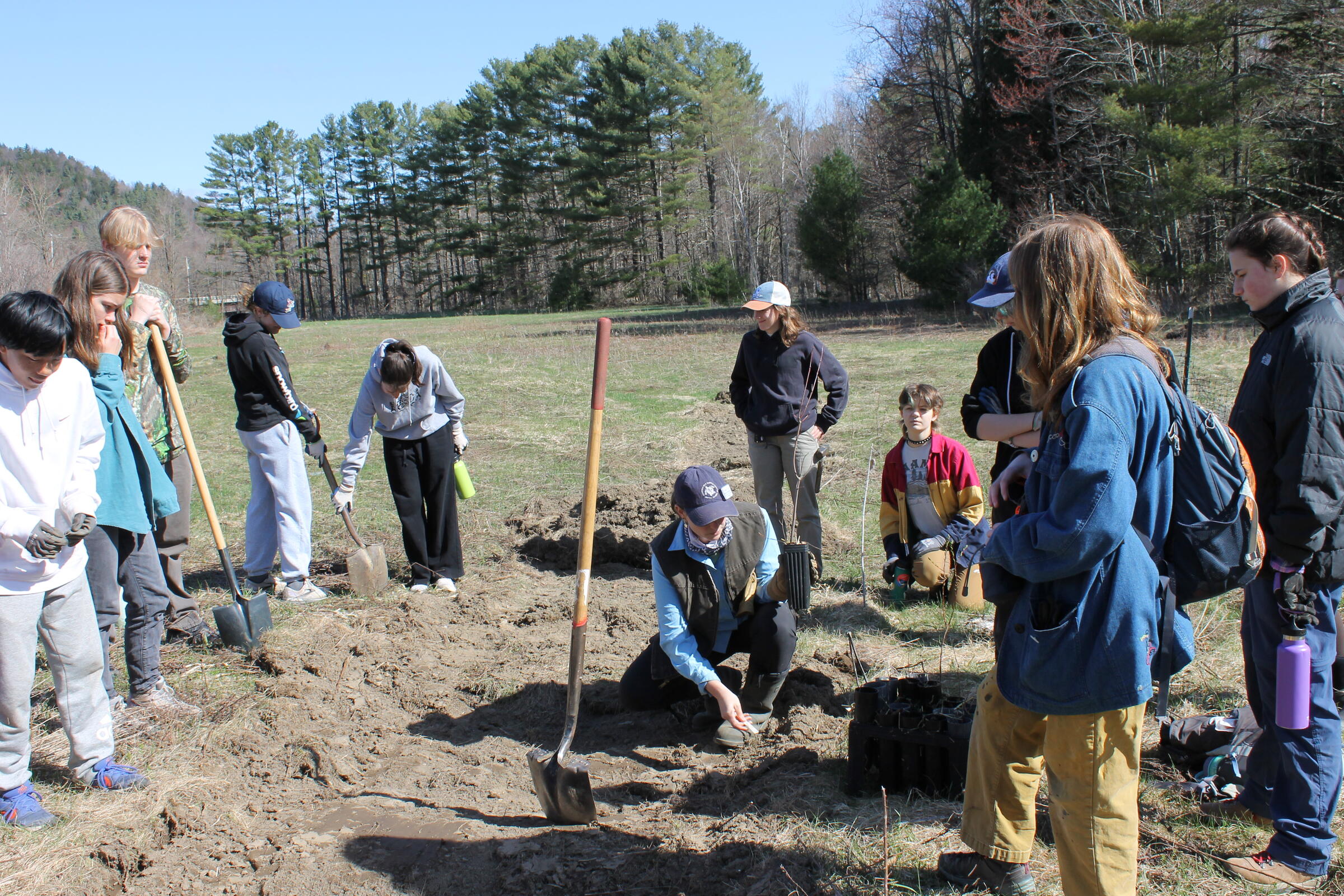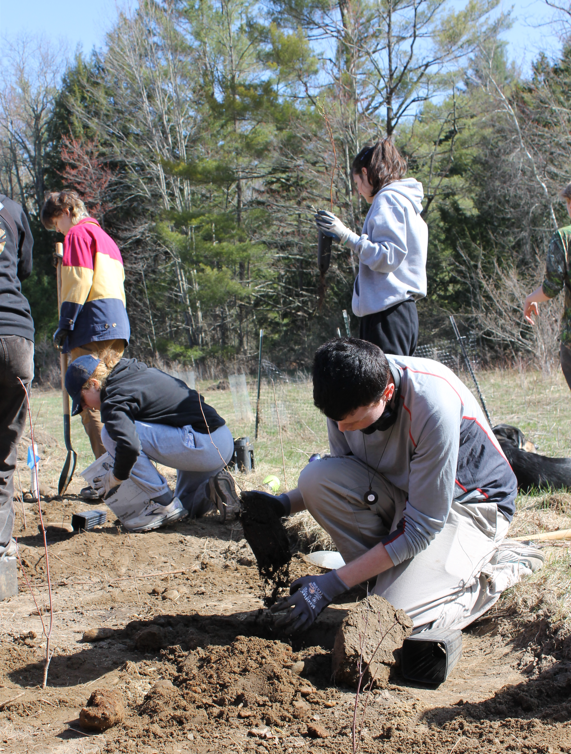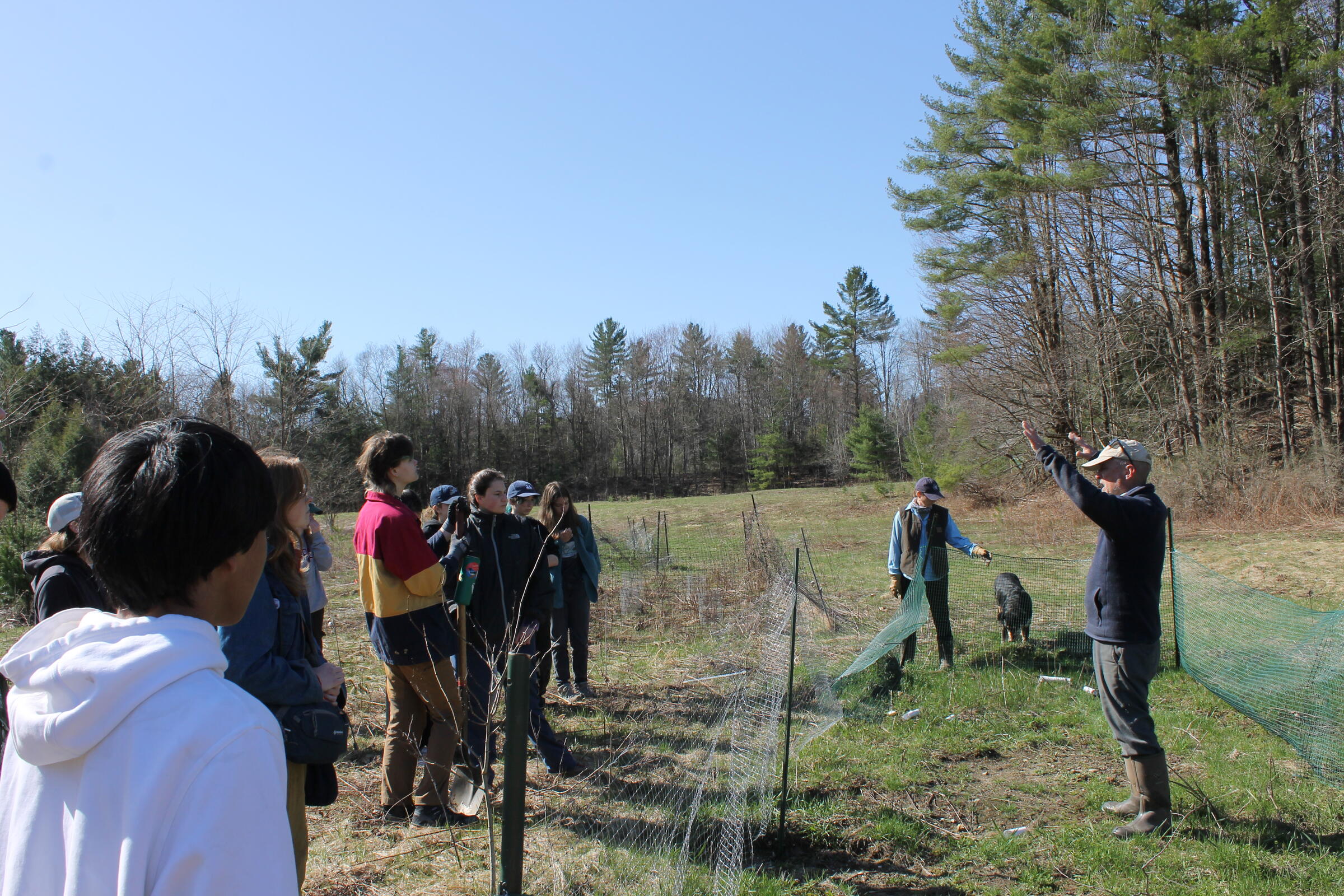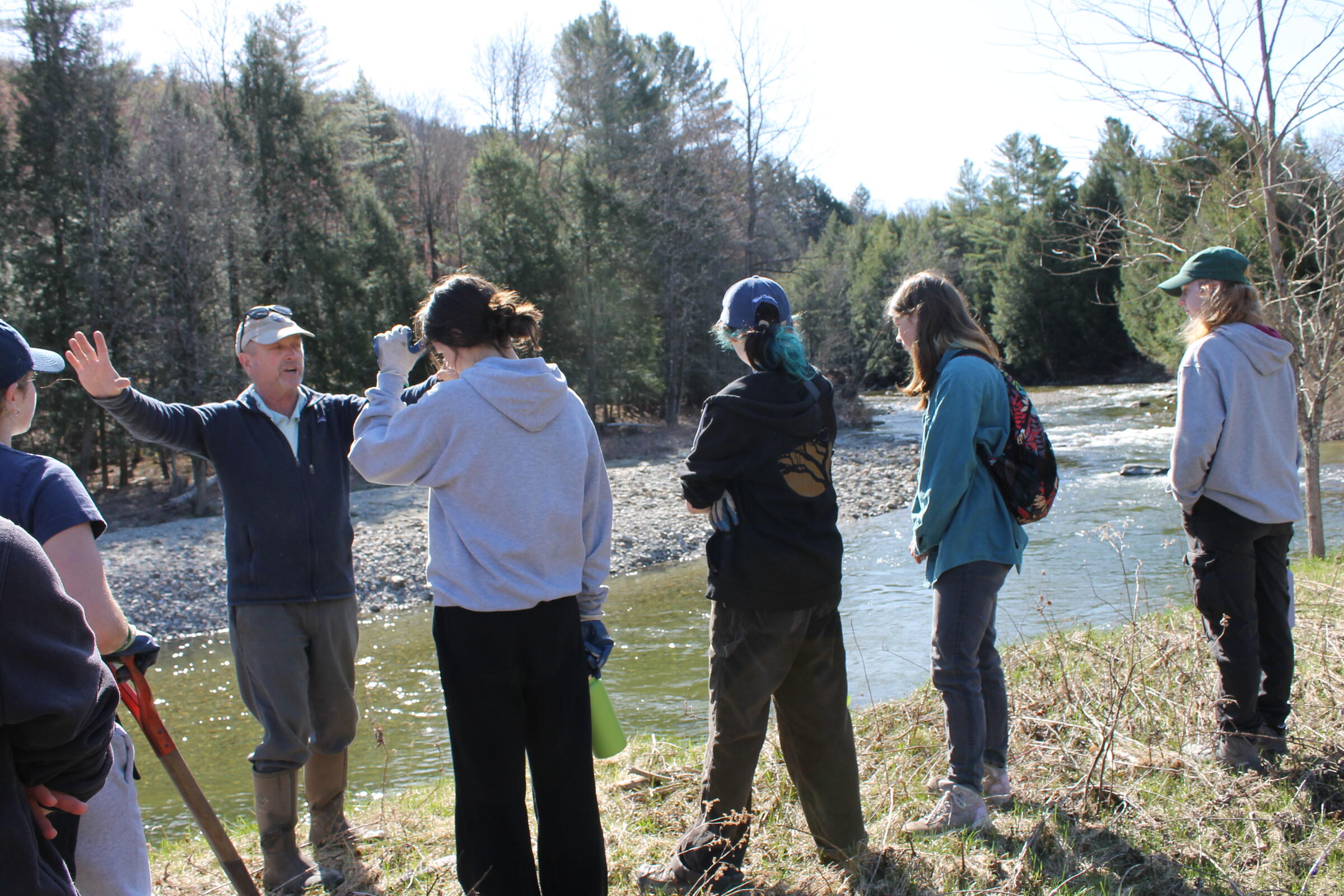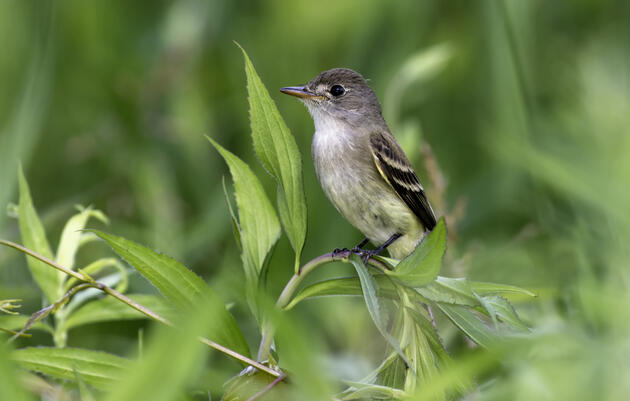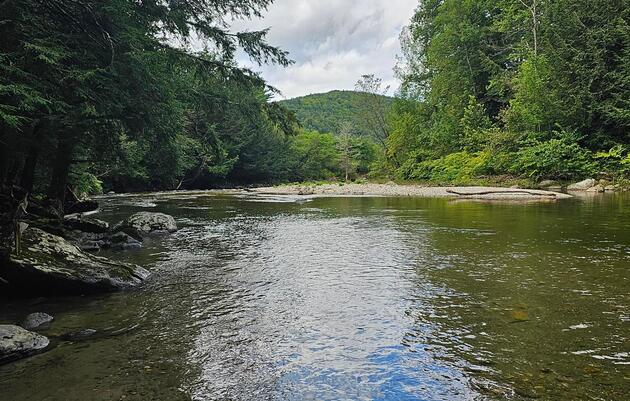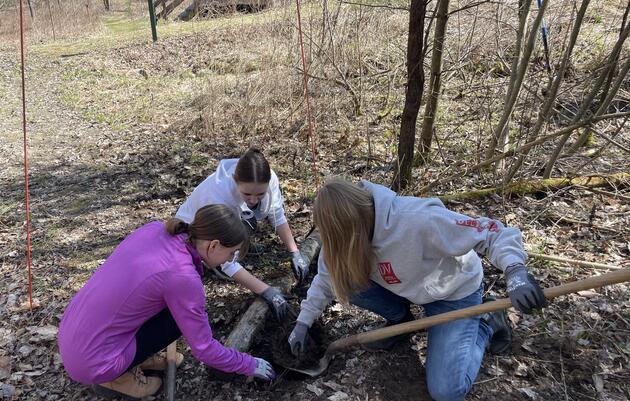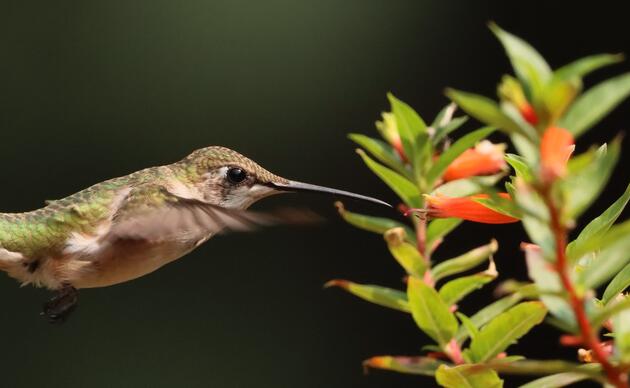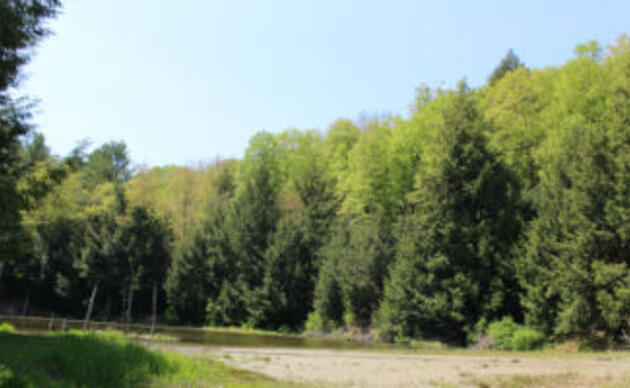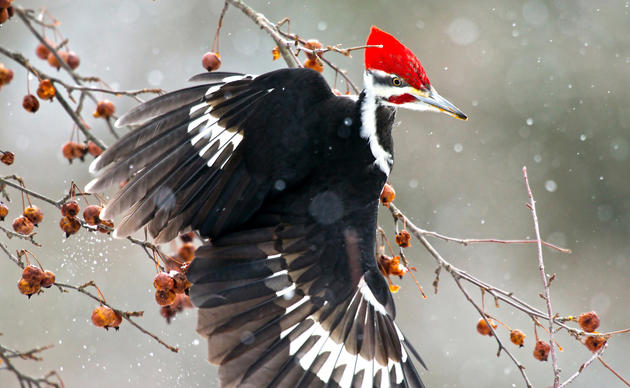On a bright April morning, with sunshine pouring down and tree swallows darting overhead, Junior Conservation Technicians (JCTs) gathered along the Huntington River at the Green Mountain Audubon Center. Leading the group was Mark LaBarr, Audubon Vermont’s Conservation Program Manager, who brought everyone towards the edge of a steep, eroded riverbank.
The view was dramatic. A slice had been taken out of the earth, exposing layers of sediment and leaving plants like serviceberry hanging onto the edge for dear life. Mark explained that the major floods of 2023 and 2024 had caused this erosion, and that the group was here to help make this riparian area more resilient to future flooding events. With shovels in hand, the JCTs got to work alongside Audubon staff and AmeriCorps members. Their mission: plant native trees and shrubs to create a riparian buffer zone, a strip of vegetation along the river that helps hold the soil in place, improves water quality, and creates habitat for birds and other wildlife.
Senior Conservation Associate, Macie Broussard, gave a planting demo, and soon the team was digging holes and tucking young trees into the ground. Some of the species planted included red maple, witch hazel, serviceberry, and a variety of dogwoods, including red osier and gray. JCTs also repaired fencing around earlier plantings as well as set up new fencing for the plants we put in the ground to prevent deer browsing.
These plants aren’t just pretty, they’re essential for stabilizing the riverbank and helping the ecosystem recover from repeated flooding. Throughout the morning, a distinct rattling call echoed overhead - not from the Tree Swallows, but from a different bird. A Belted Kingfisher flew down the middle of the river. This species nests in stable dirt banks near water and feed on aquatic organisms. With time, these plantings will stabilize the riverbank, creating nesting habitat for the Belted Kingfisher.
This restoration work is part of a larger project made possible through a grant from the National Fish and Wildlife Foundation. Audubon Vermont is working with partners like Friends of the Winooski River, Friends of the Mad River, Lewis Creek Association, Poultney-Mettowee Natural Resources Conservation District, and UVM Extension to integrate bird-friendly designs into riverbank restoration efforts across the region.
By the end of the day, muddy boots and tired arms told the story of a job well done. Each tree planted is a step toward a healthier river, a stronger ecosystem, and a more resilient future. Once mature, this riparian shrubland will provide vital habitat for a variety of birds that rely on these ecosystems. Among them is the Willow Flycatcher, darting between shrubs in pursuit of insects while singing its distinctive fitz-bew song.
Interested in what plants are native to your region? Try The National Audubon Society’s Plants for Birds Database tool. Using only your zip code, this tool shows what plants to consider, which birds they support, and where you can buy them.
Junior Conservation Technicians are current high school students that are onboarded as Audubon staff and paid to explore careers in conservation through hands-on projects and guest speakers from the field. Learn more on our program page.
Scroll through our slideshow of the planting below.

